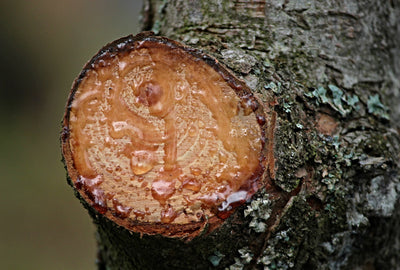Aluminum is a light metal and a popular material that makes your everyday life easier after being processed into a wide variety of everyday items and other objects. The relatively soft metal usually occurs in nature in chemical compounds and is extracted from it using various processes. In today's world, aluminum plays an important role because it is light, malleable and yet resilient. As soon as stability, resistance to corrosion and weight savings are required in the manufacture of a modern product, the versatile light metal impresses with its advantages.
Basics of aluminum: chemical properties and special features
Due to the chemical properties of aluminum, a passivating oxide layer forms extremely quickly on the pure metal when exposed to air. The layer is very thin at 0.05 micrometers and gives the light metal the silver-gray colour that you see on the dull-looking surface. With a protective effect, the oxide layer of aluminum in this composition prevents the pure metal inside from also oxidizing. The layer is crucial for corrosion resistance.
There are numerous differences between aluminum and many other metals. The following special features make the light metal exceptional in comparison:
- low density of aluminum
- relatively soft texture
- Resistance to rust and corrosion
- low melting point
- low weight
- easier to shape under pressure
- good electrical and thermal conductivity
History of aluminum production: When was aluminum discovered?
Aluminum was discovered in the 18th century and identified as an unknown element at the beginning of the 19th century. In 1754, the chemist Andreas Sigismund Marggraf obtained an oxygen compound from an alum solution, which was only later known as aluminum oxide. Almost 30 years later, Antoine Laurent de Lavoisier first put forward the theory that this compound was the oxide of a still unknown element. Hans Christian Oersted succeeded in chemically producing aluminum in 1825.
Originally, the light metal was very rare and even had a higher price than gold because the yield from earlier aluminum extraction was initially very low. Friedrich Wöhler and Henri Étienne Sainte-Claire Deville then refined the process for obtaining pure aluminum. With the increased aluminum yield, the price decreased significantly.
In 1886, Paul Héroult and Charles Martin Hall developed an electrolysis process that, as the Hall-Héroult process, significantly simplified effective aluminum production. Three years later, Carl Josef Bayer invented a process named after him that made it possible to easily isolate pure aluminum oxide from bauxite. Together, the Bayer process and the Hall-Héroult process laid the foundation for today's mass production.
How is aluminum made?

Bauxite is usually the crucial raw material for the production of aluminum . In the typical manufacturing process, aluminum oxide must first be extracted from this aluminum ore. To do this, aluminum refineries separate the bauxite from minerals such as goethite, boehmite and hematite.
The refineries grind the raw material finely and add a concentrated caustic soda solution to the material at temperatures of around 180 degrees Celsius. Aluminum refineries then use a cooling aluminate solution to precipitate pure aluminum hydroxide. The refineries heat this solid product in a rotary kiln to over 1,200 degrees Celsius to obtain aluminum oxide.
In the final step, electrolysis plays a crucial role in extracting aluminum from the oxide. In the Hall-Héroult process, refineries use molten-flow electrolysis to force a redox reaction using electric current. Before beginning the electrolysis process, aluminum refineries mix the aluminum oxide with cryolite. This creates a mixture that reduces the melting temperature by more than half compared to the oxide to just under 1,000 degrees Celsius. A reduced working temperature is an indispensable prerequisite for successful fused electrolysis.
Electrolysis takes place in a tub lined with graphite or carbon. Due to an extremely high current flow and a comparatively low voltage, aluminum settles in liquid form on the bottom of the tub. The systems then gradually suck out the metal.
Properties of the light metal: When does aluminum melt?
Aluminum melts as soon as a temperature of around 660 degrees Celsius is reached. When you compare it to other metals, you will notice that this melting point is exceptionally low. With regard to the physical and mechanical properties of aluminum, the light metal's low weight is particularly noteworthy. The density of the light metal is around 2.7 grams per cubic centimeter. This property of the classic light metal offers decisive advantages for lightweight construction.
Aluminum is tough compared to other metals and comparatively soft in terms of hardness. The corrosion resistance depends crucially on the passivating oxide layer of the light metal. This layer usually forms again in the air after damage. You only benefit fully from this if the shape of the aluminum is as unchanged as possible. Numerous alloys significantly disrupt the formation of the protective layer and thus increase the risk of corrosion. Before you decide on an aluminum alloy, you should find out in detail about the individual influence of the combined alloying elements.
General weather resistance is also one of the advantageous properties that aluminum materials offer you. The light metal is UV-resistant and therefore remains relatively insensitive when you place objects in sunlight. Because of its malleability, the metal can be designed and refined in a variety of ways. It is helpful that aluminum profiles with a fairly small cross-section can also provide stability.
The following important features in particular make aluminum a versatile material:
- Formability
- Castability
- Curability
- machinability
- Weldability
- Solderability
Uses of the Metal: What is Anodized Aluminum?
Anodized aluminum is a material that has a thicker oxide layer compared to the normal form of light metal, which opens up interesting possibilities for particularly varied uses. The anodizing process creates a layer on the metal that is at least five micrometers thick. The oxide layer of anodized aluminum can even reach five times this value. With the thicker layer, the hardness of the metal surface increases as well as the chemical resistance of the material in the anodizing process.
In industry, aluminum is generally used primarily for the following purposes:
- mechanical engineering
- Electrical engineering
- Tableware production
- Window manufacturing
In the construction industry, the light metal plays an important role in the production of concrete. Aerated concrete is made with aluminum pastes and aluminum powder. At the same time, the metal is used as a functional and construction material in construction. The corrosion-resistant properties of aluminum are often advantageous, especially for lightweight constructions and decorative components, as soon as you are planning a building project.
In the area of transport, the light metal in vehicles also offers you enormous advantages. Due to the low weight of aluminum, the material used in vehicle construction ensures that means of transport require less fuel. Cast aluminum alloys are particularly popular in the production of engines, transmissions and chassis.
In addition, you will find numerous packaging that contains the light metal in everyday life. The packaging industry often uses the advantages of aluminum for the production of food and beverage cans. Aluminum foil is also a popular packaging material.
Aluminum is important for modern technologies. The material facilitates the development of innovative devices through the right mix of formable, strong and rigid properties. This enables developers to make technology safe, sustainable and easy.

If you want to engrave anodized aluminum yourself , you will benefit from the Mr Beam laser cutter. This gives you the chance to implement varied design ideas. While you can give the light metal your own touch for a personalized gift by engraving it with the Mr Beam laser cutter, there are hardly any limits to your creativity.
Recycling Aluminum: Ecological Benefits and Statistics
The recyclability of aluminum offers crucial ecological advantages. Recycling uses much less energy than the original extraction of aluminum from bauxite. In direct comparison with production in the aluminum refinery, the energy consumption during aluminum recycling is only five percent. This is also due to the fact that scrap aluminum is much easier to melt than aluminum oxide because of its lower melting point.
In addition, fewer residues are created during aluminum recycling, which at the same time poses less of a problem in terms of ecological aspects. Above all, the avoidance of red mud as a waste product from aluminum oxide extraction is a decisive advantage of recycling. If ecological advantages are crucial for you, you should therefore prefer products made from recycled aluminum.
The International Aluminum Institute presented statistics in October 2020 that show the global aluminum recycling rate is around 76 percent. In Europe, around 81 percent of aluminum scrap is recycled. Germany plays a large part in this because, according to statistics, the recycling rate for aluminum packaging was over 95 percent in 2020.
Future of aluminum: trend towards vehicle construction and interesting innovations

If you are interested in future trends and developments in the aluminum sector, you should especially keep an eye on vehicle construction. In this industry, aluminum is considered a material of the future in car manufacturing as well as in the production of rail vehicles, ships and aircraft. Because lightweight construction remains an ongoing trend in the automotive industry with advantages in terms of energy and fuel consumption, the light metal is becoming increasingly popular in this area. To improve vehicles, car manufacturers are constantly developing new aluminum alloys to individually optimize corrosion resistance, strength and formability.
The following aluminum constructions in particular are suitable for a wide range of vehicle parts using modern manufacturing processes:
- Cast constructions
- Forged structures
- Extruded structures
- Sheet metal constructions
If you want to find out about innovations in the area of aluminum processing, the further development of casting processes is particularly worth paying attention to. The central goal of these developments is to reduce energy consumption and minimize residues during processing. When innovating, manufacturers must ensure that optimized energy efficiency does not affect the quality of the casting results and that components can be easily reproduced with all details. One notable example is an automatically heated transfer trough system for casting aluminum-lithium alloys that achieves these goals.



